Music
Music from Wayne Austin. Read my blog for the latest information on all things musical, including my latest releases and songs I am currently working on.
Follow my mad tweets on Twitter.
On Music
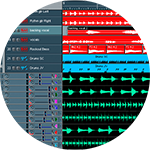
Read about my views on writing and recording songs, and how I've set my studio up.
My Songs
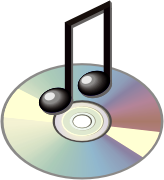
Some background on my songs.
Releases
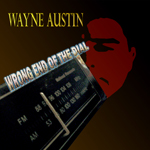
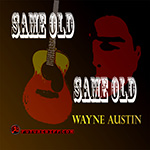
Check out my videos:
Wrong End of the Dial
Same Old Same Old

It’s a Weird Universe
The Life and Times of the World’s Dumbest Genius
On Music
Let’s get this straight. I like music. I like to listen to songs, play songs (as in guitar and sing) and write songs. Actually, my preference is to write songs for other people. I’m no performer. Plus it’s such hard work having to memorize all those songs. Now miming... Yeah, that could be my gig.
Anyone can write a song. You just need to put some words against you or someone banging away on something that may or may not be a recognized musical instrument. Hell, you can even sing, rant or mumble a cappella (that’s to sing without instrument accompaniment for you ignoranti out there.)
Not everyone can write a good song, let alone a professional song, and even fewer can write a hit.
I try. As for if I succeed, I guess that’s up to you. A successful song has a whole team of people behind it, from the writer(s), the other musicians, the producer and a professional studio through to a record company paying the cheques, distribution, marketing and so on. Independent musos don’t have these luxuries and have to make do. It’s a cliché, that long hard road, but true. At least now, the web makes it easier.
Me? I do everything. Not that I like to, I just have to. And with a midi studio, equipped with a computer, I can. But it’s a slow process because I have to enter the music by hand, ie type it in, since I’m not adept enough on keyboards to play a line. The only things I record are vocals, rhythm and lead guitar.
But having spent years learning to play guitar under a local country muso, Peter Miller (he played in number of local country music and rock bands, was a session musician and a local record producer, but is semi-retired now) I graduated to other instruments as I shifted into writing, arranging and recording songs. For many years Pete was my songwriting mentor and he cast a very picky eye over my lyrics, arrangements, recordings and mixdowns, even mastering — everything. It was invaluable having someone with all that experience and a critical ear, because he picked up everything from my stupid mistakes, to subtle timing faults buried deep in the mix, to making suggestions where to better improve a song/mix.
The one bugbear he had was my slowness.
Admittedly, the process I follow is slow and I only do three to four songs a year. But it’s not from the programming. The slowness comes from the fact that I don’t do each step on a regular basis, plus I like to try writing in different styles. It’s the challenge, I like. Which means there is a considerable learning curve as I work through from writing the basic song, to working out what instruments to arrange for, doing the arranging, and then doing the mix. This means that months can pass before I try, say, to write a song or do a mix or whatever.
At my age, inspiration doesn’t come cheap, or all that often. Same with ideas.
When I was younger, I concentrated on quantity rather than quality (not knowing how to attain that), but now the reverse is the case. At least I like to think so. And when you’re part-time , professional quality takes time.
What’s the worst space in which to set up a recording studio? A cube of course. And that’s just what I did.
I had just bought my house (back when they were affordable) and it had three bedrooms. Two of them were four-metre cubes though.
So I had to do a little modification. I stuck cork tiles to the wall behind the computer, desk and speakers and slabs of straw roofing hang off the adjacent wall at a slight angle to break up the room’s symmetry.
I remember this being used in my school library for sound insulation.
The straw false wall is off to the right and it faces a wall, which has a semi-industrial, double-glazed window.
Along with existing carpet on the floor and some styrofoam tiles stuck around the light, I managed to achieve live wall facing dead wall combinations that got rid of the standing wave reverberations and left the room with around .25 seconds of crisp reverb decay. Then the room’s ambience was taken into account by putting pink noise through the system and adjusting a dual ten-band graphic equalizer to get as close as possible to a flat frequency response at my listening position.
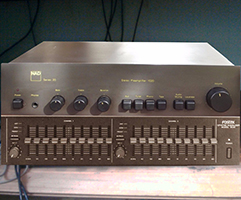 Pre Amp and Graphic Equalizer.
Pre Amp and Graphic Equalizer.
My pre-amplifier is an old NAD Series 1020, which used to be a part of my hifi set up during my younger days when I was into Hi fidelity sound. The signal then goes to the Fostex 3030 10-band Grahic Equalizer. (Picture is a mock up)
To get a flat response at my listening position I use an AudioSource RTA-ONE realtime spectrum analyzer. It displays its output as a 10-band histogram, which matches the 10 bands on the Fostex graphic equalizer.
I put the pink noise from the AudioSource PNG-ONE through the monitoring desk and out through the speakers. Then I adjust the Fostex 3030 until the AudioSource RTA_ONE displays as close to a flat response as I can get. I position the RTA-ONE where my ears would be and then do each speaker individually, before adjusting for both.
 My Actual Graphic Equalizer Settings.
My Actual Graphic Equalizer Settings.
Admittedly, ten-band graphics isn’t great, but back then 31-band graphic equalizers were much more expensive. Still, it has worked well enough to mix and master my album.
The signal is then sent to an old SUGDEN amplifier (great British brand) that I bought from an audiophile.
My speakers were again purchased from an audiophile. They are IMF Super Compact II speakers (1970's/80's vintage) with a reasonably flat response between 80 and 20K Hz. IMF (UK company) has long been out of business but the Compacts are great speakers and quite rare.
And like any studio, mine has been through a few revisions from when I first built it while doing a sound engineering course donkey’s years ago. That was (gulp) back in the mid-eighties.
Currently, I have two Soundcraft Notepad 124s, one for recording in and the other for monitoring.
Soundcraft Notepad 124 Desk and my Mixing/Recording Setup
The monitor outs for the recording notepad (bottom in right-hand picture) go to a Tascam US-366 audio interface. The notepad’s rec outs route to two mono channel inputs on the monitoring notepad for when I don’t want to monitor from the computer or the audio interface, such as when I just want to play an electric guitar through my amplifier. I can also send the recording notebook's headphone out to stereo ins in the monitoring notepad so that I can do a headphone mix of what I am playing/recording with the Logic's output.
I record at 24-bit 96kHz. Even though 16-bit/44.1kHz is theoretically all you need to reproduce an analog signal, I have found 24-bit/44.1kHz produces a warmer, better defined and more realistic sound, especially in mixes. Going to 24-bit/96kHz gives an even better quality. In comparing the live sound of my acoustic guitar through my desk to a recording, I couldn't tell the difference, whereas I can for 24-bit/44.1 Khz (by only a little bit) and even more so for 16-bit.
The output from the Tascam unit also goes to the monitoring notepad. The reason I have two notepads is that individually they didn't have the flexibility of my previous ailing desk, but together they more than cover my needs while being cheaper than a single desk equivalent.
Finally the US-366's input is sent to a Mac Mini with two 24" monitors, running Logic X.
History
Before I went Mac, I had a Windows PC with XP and an M-Box to record with. The M-Box came with Pro Tools, but I got stymied trying to figure out how to edit midi in Pro Tools. The damned thing wouldn’t do what the manual said. The manual was obviously written for a Mac and nowhere did it say what the equivalent of a certain key was in windows. After two weeks of frustration, I gave up. Luckily, the M-Box had an asio driver, so I could use Logic 5, but I was limited to twenty-four audio tracks, which is enough in most cases, though with my 20-bit Gina card in Windows 98, I had 64 audio tracks available. Maybe one day, I’ll try to work it out. Logic 5 is a few years out of date and the later versions were only available on a Mac since Apple bought the company.
For midi, I had a Roland Sound Canvas and a Roland JV880 synth unit. These plugged into an old Tascam M20 8-channel desk (4 out, but only two work.) The desk’s output was routed to a NAD pre-amp, then a stereo 32-channel graphic equalizer (to adjust for the room’s acoustics) and to an amp. I mixed to .wav files by sending the audio channels out to the desk and adding in the sounds from the synth units, and then recording the result back in Logic. It was only later that I got the bright idea of recording the synth outputs into Logic and messing with them before bouncing the resulting mix to a .wav file.
Before that, hell even before I began using computers, I actually mixed to a cassette recorder for such a long time that, when it finally wore out and died, I considered giving it a state funeral.
‘When was that, grandpa? The eighteen-eighties?’
‘No, you miserable twerp. The nineteen-eighties!’
‘Same thing. Still means you’re way past your use-by date.’
‘Grrr....’
Actually, I don’t have any kids, grand or any other kind. After all, why should I marry a woman who’s stupid enough to want to marry me, huh? I mean, it stands to reason ... anyway, she didn’t want to marry me, the restraining order made that quite clear. Her husband wasn’t crazy about it either, but I digress....
For those who have read this far, in case you haven’t guessed, my studio has been around long enough for the cobwebs to fossilize.
So, let’s begine at the beguine...
Back in the eighties, before I did a sound engineer’s course, back before I bought a house and set up a home studio, I spent a few years stuffing around with a stereo that had a pair of cassette units. Then I moved on to a Tascam four-track unit and a six-channel mixer, and eventually, after building a studio, on to a Tascam eight-track recorder and the eight-channel desk.
With the four-track, I added a Yamaha R1000 drum machine. Mein Got! I was almost a band. I could record rhythm and lead guitar, drums (mono) and butcher a bass line. With bounce after bounce after bounce I’d end up with a song in mono with guitar, drums, bass and noise ... lots and lots of noise.
Then I got my first computer (after the eight-track arrived, if I remember) and really went midi. It was an Amiga 2000. Talk about expensive: over $3000 Australian. That’s a small fortune in 1990’s currency. With that came Bars &Pipes — a great little midi software package that disappeared without trace after Microsoft bought it — and the Sound Canvas. There I was, a pig in shit. I could program in not only a decent bass track, but piano and lots of other instruments. Still had to record it on the eight-track though. I tried a couple of things to try to automate it, eg using one of the tracks to control Bars &Pipes so I didn’t have to record the midi stuff, but I don’t recall it ever really working.
And then ... ta da! I went to digital recording with Logic 3 and a Gina card in Windows 95. Bye-bye Bars &Pipes, hello frustration. If I hadn’t been the world’s dumbest genius, I should have seen straight away that I could have kept Bars &Pipes for the midi side and used Logic for the audio recording. You see I transferred my midi songs to Logic from Bars &Pipes via midi with Bars &Pipes in control.
And so, my eight-track was consigned to the dark confines of an old cupboard in the spare room and my new motto for digital recording was: I’ll fix it in the mix.
From 95 I went to 98 (and Logic 4) to XP and I only went to XP because I had to. My Gina card was beginning to show its age, so I bought an M-Box after reading a couple of rave reviews. But what they didn’t say was that the reviewers tested it on a Mac. Unfortunately, only after I bought it did I see in the fine print at the bottom of one of the narrow sides of the carton that it required Windows XP.
And then, after installing Pro Tools (after installing XP) did I discover that Pro Tools wouldn’t work with my computer. Lo and behold, but in the depths of yet more fine print, did I discover that I had to go to Digidesign’s web page to see what hardware this option of Pro Tools was compatible with. It’s lucky I have a full head of hair otherwise I’d have been frustrated with having nothing to pull out. There was a veritable menagerie of Pro Tool versions, each for different recording hardware and different motherboard/processor/chipset combinations for the different VERSIONS of each option of software. And it just so happened that my computer’s chipset wasn’t compatible with any version of Pro Tools for the M-Box.
The new motherboard is. So that was a cheap exercise — not!
Computers! I’ve worked with them in a professional capacity for years and I still hate ’em. ;-)
Ah, why don’t you go check out my songs? They say music can soothe the savage breast. I tried, but I got my face slapped.

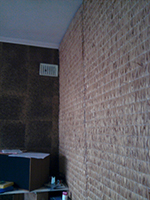
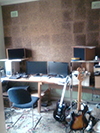
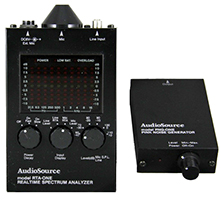

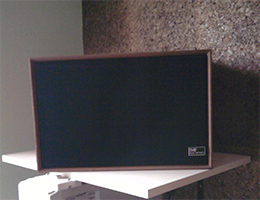
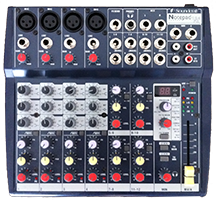
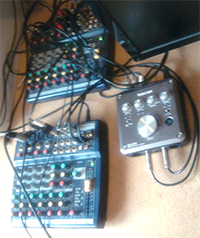
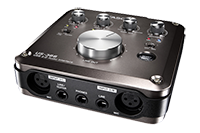
 Writing Blog
Writing Blog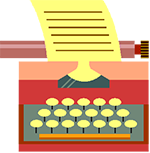 On Writing
On Writing Novels
Novels SF Stories
SF Stories Other Stories
Other Stories


